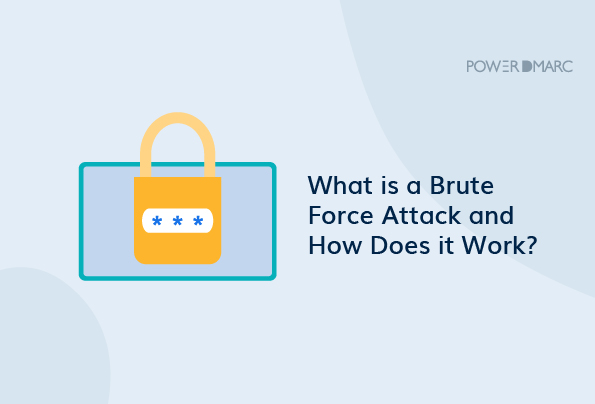As technology continues to advance, cybersecurity threats become more complex and sophisticated. One such threat is a brute force attack, a method used by hackers to gain unauthorized access to a target’s account or system. Brute force attacks have been responsible for several high-profile data breaches, making it a serious concern for individuals and organizations.
In this article, we’ll dive into the world of brute force attacks. Let’s explore what they are, how they work, and what steps you can take to protect yourself and your systems.
Key Takeaways
- A brute force attack systematically tries every possible combination of authentication credentials until the correct one is found.
- Various types of brute force attacks include simple brute force, credential stuffing, dictionary attacks, hybrid attacks, and reverse brute force attacks.
- Using strong, unique passwords that combine uppercase and lowercase letters, numbers, and symbols is essential for protection against brute force attacks.
- Implementing two-factor authentication adds an extra layer of security, making it harder for attackers to gain access even with the correct password.
- Monitoring account activity and limiting login attempts can help detect unauthorized access and prevent successful brute force attacks.
Brute Force Attack Definition
A brute force attack is a type of cyberattack that involves trying every possible combination of authentication credentials, usually usernames and passwords until the correct one is found. The attacker aims to gain unauthorized access to a target’s account or system. ~Source
The attack is typically automated, and the attacker can use specialized tools or software to generate many potential passwords or other authentication credentials.
The method is often used when the attacker has no prior knowledge of the target’s password and the password is not easily guessable.
Brute force attacks can target any system that requires authentication, such as online accounts, email accounts, servers, and mobile devices.
Simplify Security with PowerDMARC!
What Is a Brute Force Attack?
In a brute force attack the attacker systematically tries every possible combination of characters until they find the correct credentials that will grant them access to the target system or account.
Brute force attacks are typically automated and can be carried out by software or specialized tools. The attacker can use different dictionaries, wordlists, or algorithms to generate many potential passwords or other authentication credentials.
How Does a Brute Force Attack Work?
A brute force attack typically begins with the attacker acquiring a list of potential usernames or email addresses. They then use a specialized tool or software to generate a list of potential passwords or other authentication credentials.
The software or tool used in the attack will then systematically try every possible combination of usernames and passwords until the correct one is found. This process can take a long time, especially if the password is long and complex.
The time it takes to crack a password using a brute force attack depends on several factors, including the complexity of the password, the strength of the encryption, and the speed of the attacker’s computer or network.
For example, a strong password consisting of a combination of uppercase and lowercase letters, numbers, and symbols could take months or even years to crack using a brute-force attack.
Types of Brute Force Attacks
A brute force attack aims to determine the correct authentication information by systematically trying different combinations. Successful brute force attacks can be extremely costly and time-consuming for the victim organization.
There are several types of brute force attacks:
Simple Brute Force Attack
A simple brute-force attack involves running through all possible passwords and checking whether they work.
The main advantage of this kind of attack is that it’s very fast; however, it can also be very ineffective because many systems limit how many attempts can be made.
Moreover, some passwords are too long for any computer system to handle in a reasonable amount of time.
Credential Stuffing
Credential stuffing is a form of password guessing that involves using lists of valid usernames and passwords gathered from previous intrusion attempts or data breaches.
By searching for usernames and passwords on websites such as Pastebin, attackers can use these lists to gain access to accounts on other sites where those credentials might still work.
Dictionary Brute Force Attack
The attacker uses a dictionary to find the password. The attacker uses the most popular passwords and then tries them on the target website. This is very easy to detect and prevent since it generates much traffic.
Hybrid Brute Force Attack
A hybrid brute force attack uses multiple concurrent methods, such as guessing passwords while attempting to use an electronic key obtained through social engineering or phishing attacks.
Reverse Brute Force Attac
Reverse brute force attacks are when hackers try to guess the password based on what they know about the target’s life or activities.
For instance, if someone knew you loved colorful socks, they might try passwords like “Socks123” or “ColorfulFeet” in their attack. While this example seems playful, it highlights the importance of using unpredictable, strong passwords unrelated to your personal preferences.
Protect Against Brute Force Attacks
Brute force attacks are common when it comes to hacking passwords, but there are ways you can protect yourself from them.
Here are some ways you can protect yourself against brute force attacks:
Use Strong Passwords
Use strong, unique passwords for all your accounts. Strong passwords should be 12 characters long and include a combination of uppercase and lowercase letters, numbers, and symbols.
Enable Two-Factor Authentication
Two-factor authentication adds an extra layer of security to your accounts by requiring a second form of authentication, such as a code sent to your phone or an app. This makes it more difficult for attackers to access your accounts, even if they have your password.
Related Read: Email Multi-Factor Authentication
Limit Login Attempts
You can limit the number of login attempts on your website or system, which can prevent brute-force attacks. After several incorrect login attempts, the account can be locked, or the IP address can be blocked.
Monitor Account Activity
Regularly monitoring your account activity can help you detect any unauthorized access attempts. You can set up alerts to notify you of any unusual activity, such as login attempts from a different location or at an unusual time.
Keep Software Up-to-Date
Ensure that all your software, including your operating system, web browser, and antivirus software, is up-to-date. Software updates often include security patches that can protect against known vulnerabilities.
Use Captchas
Captchas can be added to your login page to prevent automated attacks. Captchas require the user to prove they are human by completing a simple task, such as typing in a series of numbers or letters.
Implement IP Blocking
You can implement IP blocking to prevent multiple login attempts from the same IP address. This can help prevent brute force attacks that are carried out using a single IP address.
Final Words
In a nutshell, a brute force attack is any attack wherein an adversary tries every possible combination or permutation to find the correct answer or key.
Thus, the top two most important steps for defending yourself against a brute force attack are to use the strongest passwords you can think of—and make them unique to each site you visit—and don’t try and hide your IP address behind free proxy servers.
The less information an attacker has about you, the harder it will be for them to guess your password.




